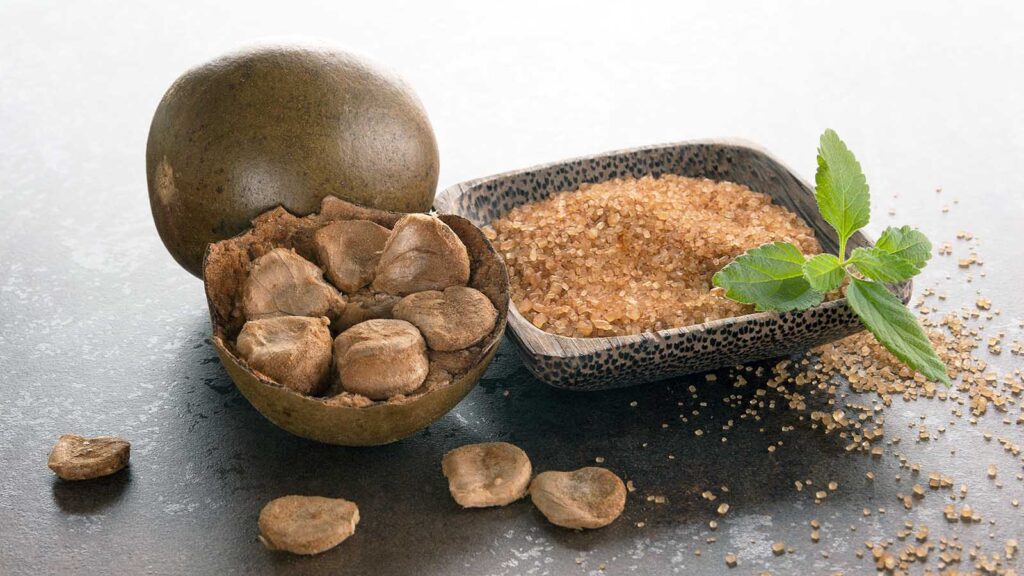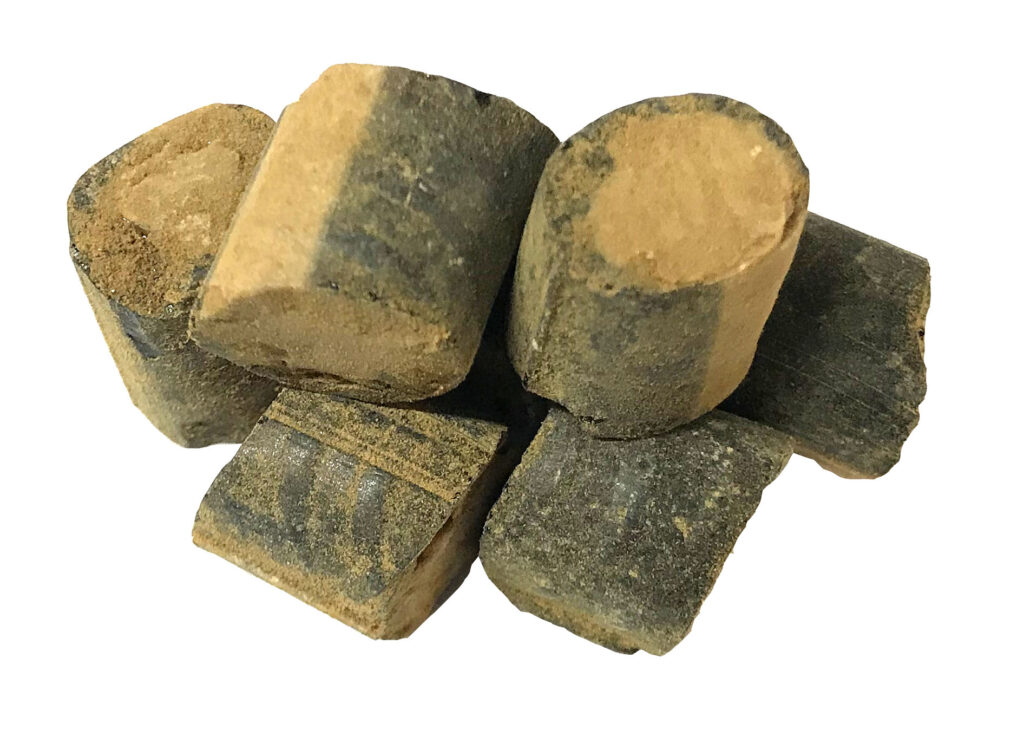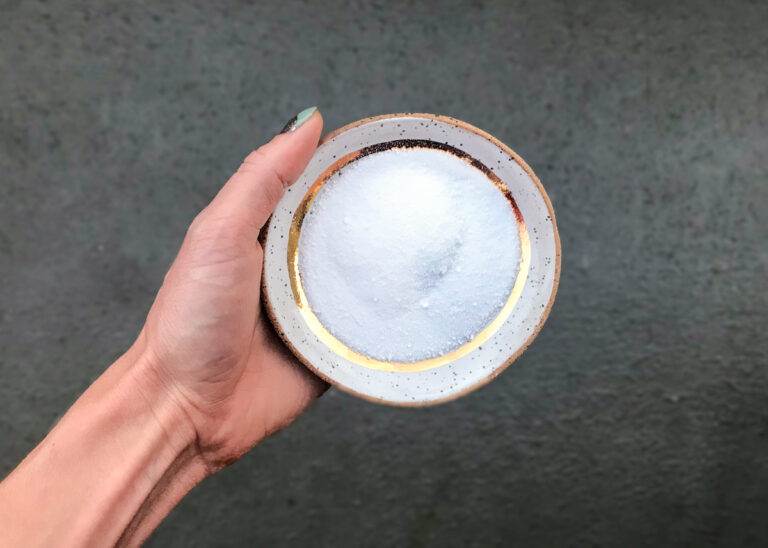For those of us with a sweet tooth or penchant for baking, there’s hope for healthy treats! Today we compare stevia and monk fruit – arguably the two most popular zero calorie sweeteners touted for being natural and delivering health benefits. Read on to find out why each one is celebrated, and when and how to best take advantage of these two sweeties.

Stevia and Monk Fruit 101
Whether in your morning coffee, smoothies or baked goods, it is a wise idea to swap traditional white sugar out for natural low or zero calorie sweeteners when you can. Stevia and Monk Fruit are both plant derivatives very commonly used to deliver sweetness without calories, but aside from seeing them regularly on the ingredient lists of your favorite health foods, what do you know about them? For starters, both have a Glycemic Index (GI) rating of zero, which is a good thing. The GI ranks foods according to how they affect blood glucose levels. Items falling low on the GI (0-55) are absorbed more slowly and have a lower rise in blood sugar. Where items with a moderate to high rating (55+) lead to a spike in blood sugar and the inevitable crash. Accordingly, our promotion of these sweeteners isn’t solely about cutting calories where you can, it’s also about making nutritional choices that will help you feel your best throughout the day.
THE BOTTOM LINE: Both are great options but Monk Fruit is the best, because it delivers real health benefits and is not as likely as stevia products to be mixed with a bunch of fake, unhealthy fillers. Also note that a little goes a long way for both of these, so investing in some tiny measuring spoons will come in handy, especially if you’re a baker! Here are the details on how we came to this decision…
Why Stevia Rocks
- Glycemic Index Rating:0 (you can’t get better than this)
- Fun fact: Luo Han Guo is the official name for what we commonly call Monk Fruit.
- Why to use it: This low-calorie sweeter acts an anti-inflammatory. Yep, this sugar replacement is actually good for you. Both it’s sweetness and health benefits come from their high mogroside content (a compound 300-400x sweeter than cane sugar, with antioxidant properties, no effect on blood sugar, and studies showing anti-fatigue, anti-diabetic and anti-cancer effects).
- Historical uses:Part of the gourd family and a distant cousin to the cucumber, this wonder-fruit has been used in Chinese medicine for centuries treating colds, coughs, sore throats and more.
- How to use it: baking, cooking, coffee, tea.. all the ways you’d use other sweeteners. This is an especially good sweeter for baking since heat does not diminish its nutritional value.
What to look for when buying: Always go for pure monk fruit, like this one.
What to use when baking: For baking or when using a recipe where you’ll need to mimic a 1:1 sugar ratio, you’ll want to use a blend. Some companies blend monk fruit with erythritol, a sugar alcohol is OK for most people, but not all. We like this one for baking. Avoid brands that mix the monk fruit with maltodextrin (a starch) or dextrose (a chemically derived sweetener that is identical to glucose, aka blood sugar spiker).

Why Stevia Rocks
- Glycemic Index Rating:0
- Fun fact: Stevia is related to the daisy and chrysanthemum.
- Historical uses: Indigenous to South America, stevia is now grown and harvested around the world. As a medicinal herb, stevia was used to treat stomach problems, colic, burns and even used as a contraceptive.
- The drama: Stevia gets mixed reviews in the world of wellness. Some tout its health benefits (anti-cancer potential, glucose and cholesterol regulation), while others give it a black mark (metabolic dysregulation, decreased fertility). The main reason for this confusion stems from the myriad of “stevia” products on the market – as different products use different parts of the plant, processes for extraction, and other methods that can compromise its healthfulness.
- How to use it: coffee, tea, smoothies and shakes.
What to look for when buying stevia: This little leaf can be an excellent sugar replacement, but you have to be careful because there are a range of products marketed as “stevia” that are loaded with not so healthy fillers (like dextrose), and/or are so heavily processed they are a far cry from the plant. Thus, the most important thing to note is the type of stevia product you’re using. Avoid overly-processed products like Truvia!
- Green leaf stevia (30-40x sweeter than table sugar)
- Stevia extracts (100-200x sweeter than sugar)
Final Sugar Thoughts
- To satisfy your sweet tooth without any sugar replacements opt for cinnamon, licorice, nutmeg, unsweetened cocoa and vanilla. We love licorice tea, cocoa-cinnamon-cayenne hot chocolate or a chai shake.
- FYI – When hyper-sweetened foods are regularly consumed we can build up a tolerance that leads us to crave sweeter and sweeter treats (extract forms are 100-200x sweeter than table sugar!). It’s fine to use in your daily drinks, but just keep an eye on how much you use and try to stick to that amount until there is more research about the long-term effects of high consumption.
- As is true with all health regimens, use common sense and consult your doctor if you are pregnant, have unique health concerns or are taking prescription medications.


